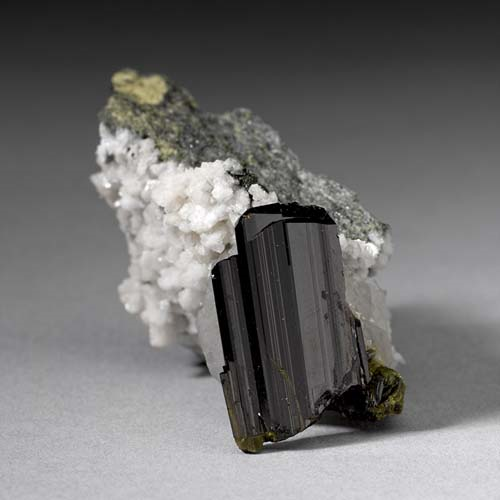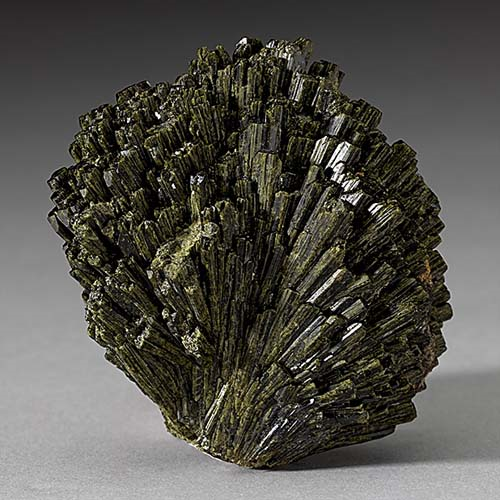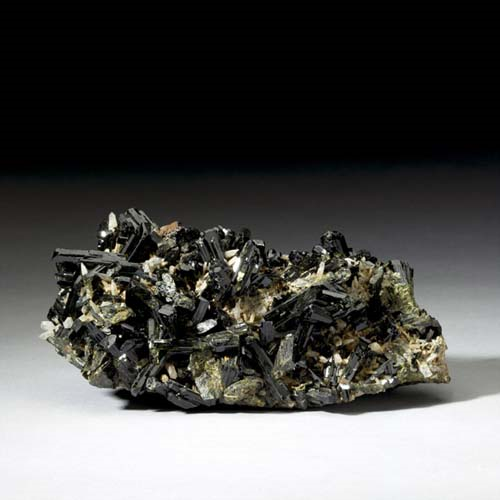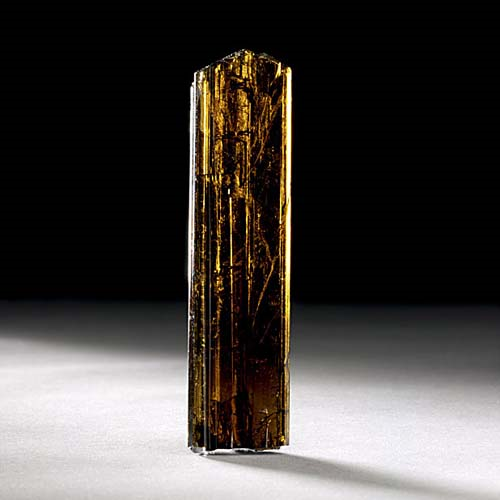Epidote - Ca2(Fe3+,Al)3(SiO4)(Si2O7)(O,OH)2
Sorosilicates




Habit: Light to dark pistachio green. Crystals short to long prismatic, often striated, but also thick tabular or acicular; commonly massive, coarse to fine granular, or fibrous. Pearly or resinous luster; transparent to nearly opaque. Grayish white streak.
Environment: Very common in regional and contact metamorphic rocks and as a product of hydrothermal alteration of plagioclase.
Etymology: From the Greek epidosis, meaning "increase," because the base of the prism has one side longer than the other.
Perhaps the most famous source of world-class epidote specimens is Knappenwand, in the Hohe Tauern Mountains of Salzburg, Austria. Epidotes from this locality tend to be a dark olive green, with deep striations and sharp terminations. This fairly dense but fragile mineral has distinct cleavage; it is rarely cut into gemstones.